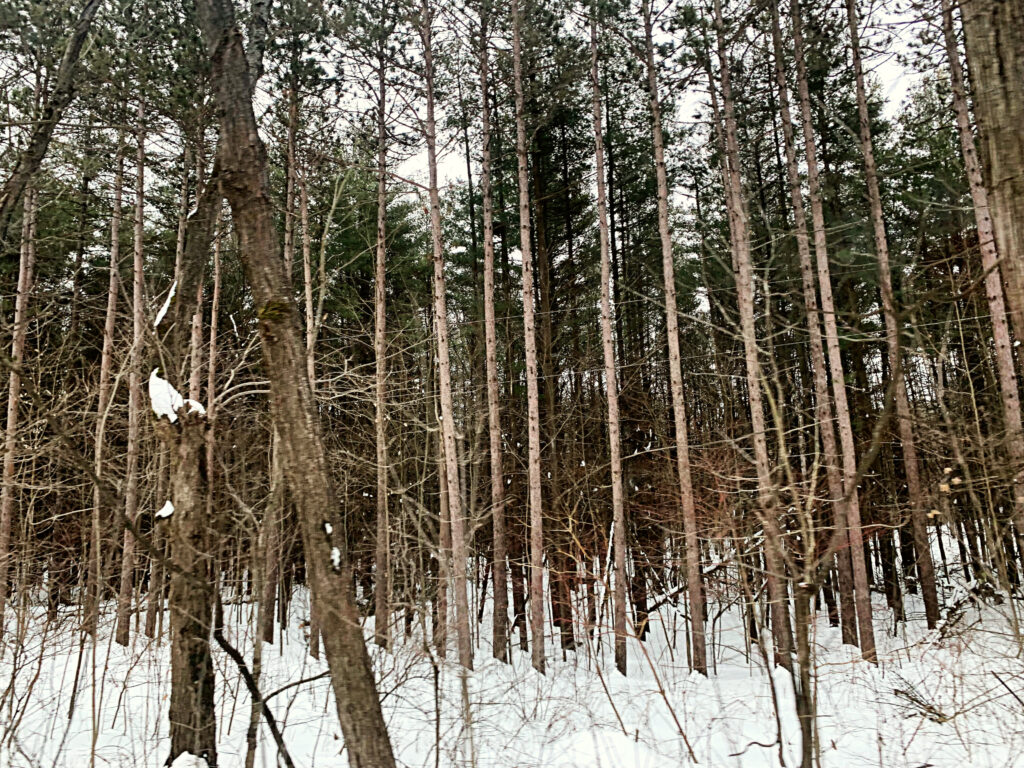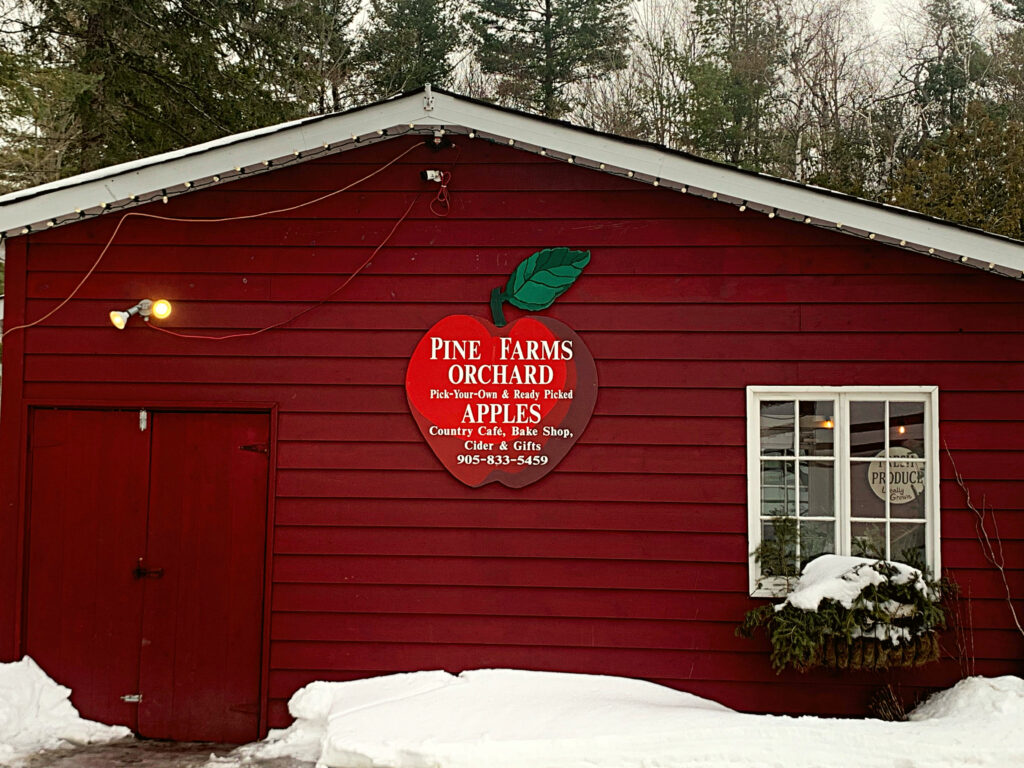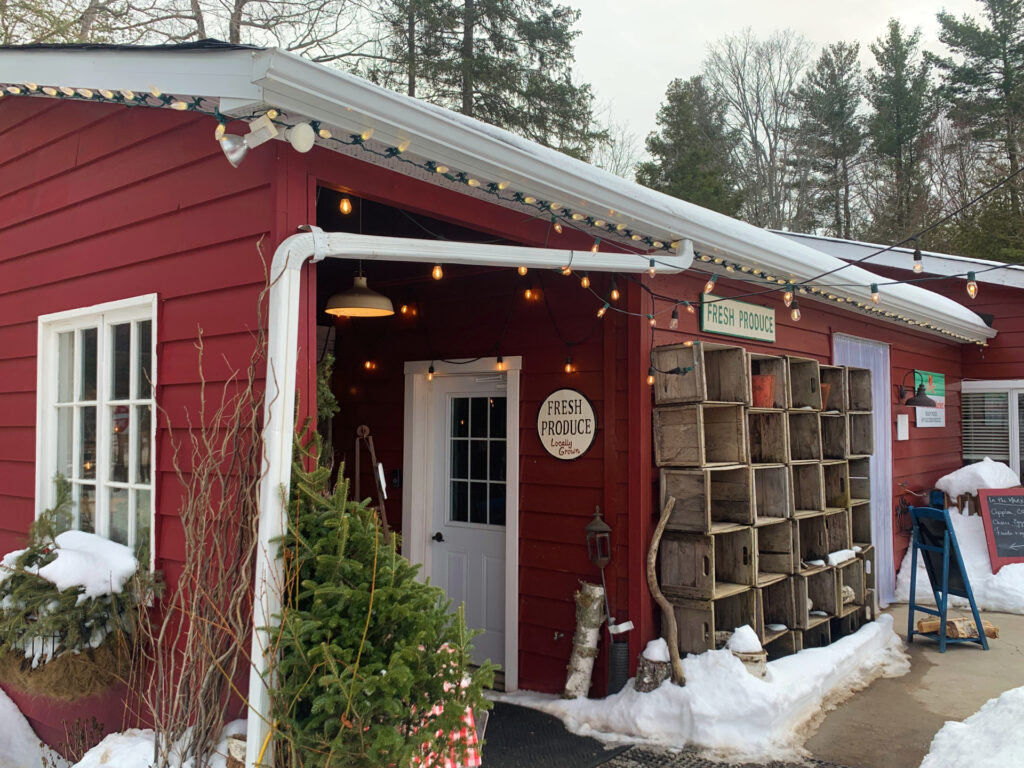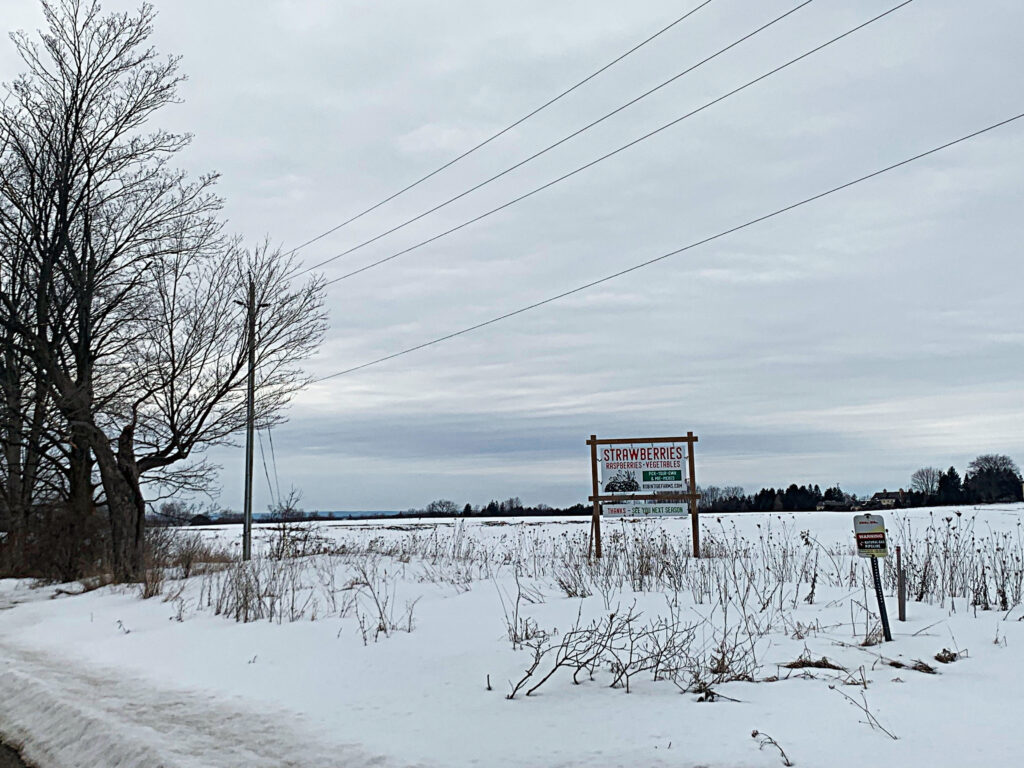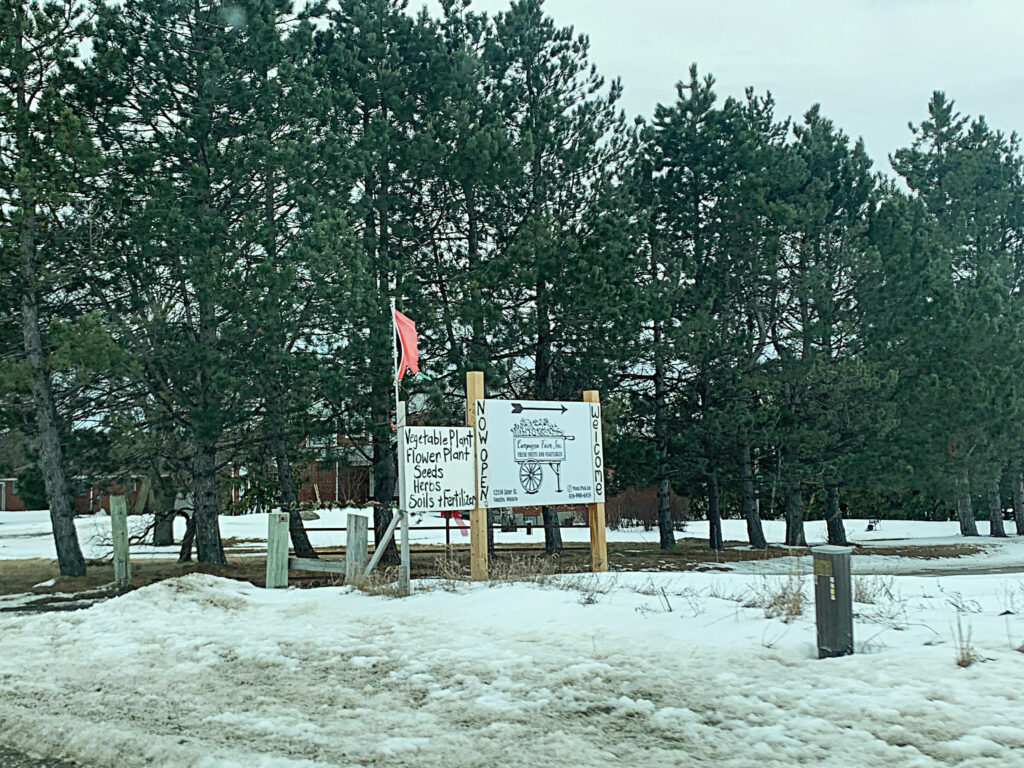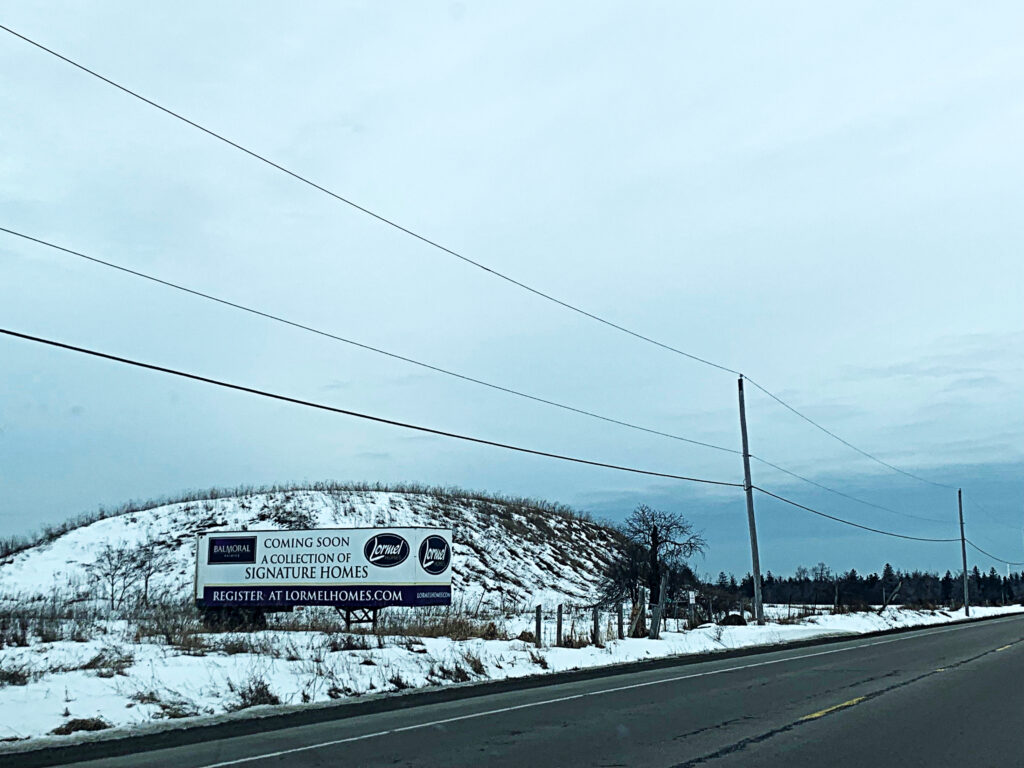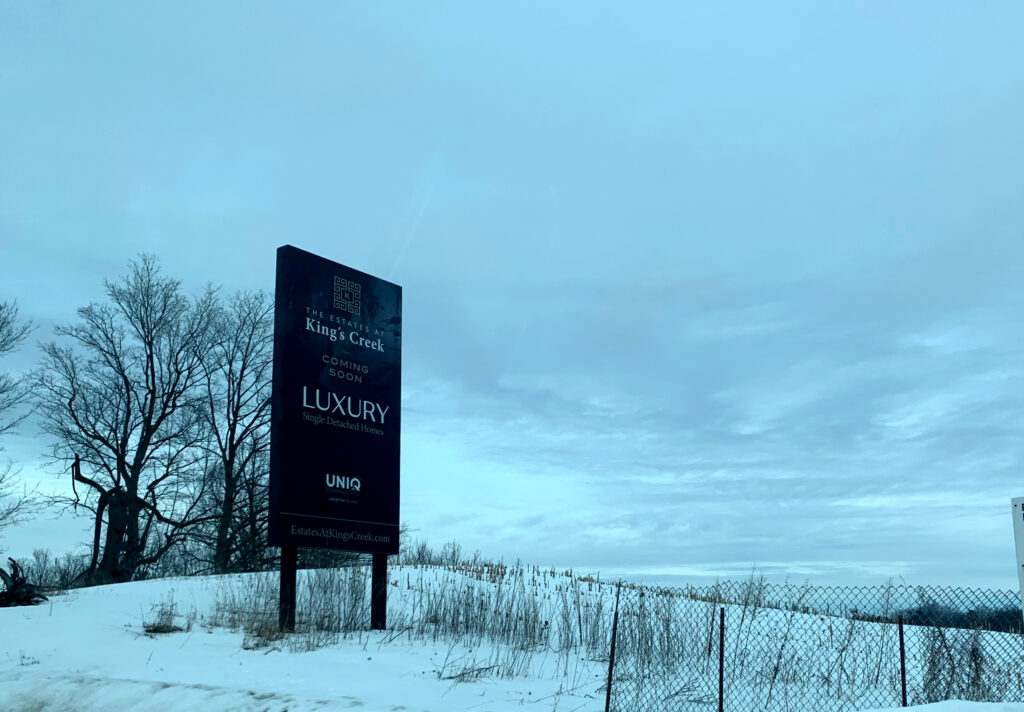By Emily Di Natale
The Ford Governments’ More Homes Built Faster Act makes Ontarians question how much of the Greenbelt will be actually left green.
The first sign to me that something was changing was about three years ago. The sounds of huge trucks driving by my house at all hours of the night woke me from my sleep. New potholes in the roads from the heavy load they carried annoyed me to no end. But still, I thought little of it. After all, I lived in an area where development was constant and regular.
When my parents bought our house 27 years ago on the border of Vaughan and King City, it hadn’t been built yet. It was merely a churned plot of soil, preparing to be built on. The entire area was farmland that had been converted to housing. Twenty-seven years, a home, and three kids later, there are at least 100 more subdivisions, two grocery stores, and a hospital. The old farmland that existed is wiped clean of wildlife, and tall evergreen trees in front of my house are the only reminders of the forests that used to thrive here.
If you drive five minutes north of my house, the townhouses thin out, and slowly single-lane roads replace eight-lane highways. Leaves rustle in the wind from what seems like century-old trees and it starts to smell faintly of animal feces and tractor exhaust. Just under five kilometres north, lives thriving farmland, with local markets selling fresh eggs, apples, strawberries, and my all-time favourite as a child, sweet corn.
Last fall, Ontario Premier Doug Ford announced Bill 23, which proposes to take land out of the Greenbelt and turn it into affordable housing. Critics are outraged saying that paving over the Greenbelt will destroy one of Ontario’s food sources while not producing affordable housing after all.
“This legislation is essentially written for the development industry, without any consultation with very rational and reasonable people, such as municipalities, First Nations and local communities,” said Mike Marcolongo, a former policy advisor with the Ontario Ministry of Agriculture, Food and Rural Affairs and the campaign coordinator of the Greenbelt Promise.
Doug Ford’s government introduced the new bill in 2022, as part of the Progressive Conservative provincial government’s plan to build 1.5 million homes by 2031. A campaign promise for re-election, Ford pushed that in order to alleviate the affordable housing crisis, the new housing goal needed to be met.
Repeated calls and emails to the office of Stephen Lecce, MPP for King-Vaughan, for comment on this story, have remained unanswered.
Graydon Smith, the Minister of Natural Resources and Forestry said in a press conference when the bill was first announced in October, “We want to make sure that people are safe and that property is protected but at the same time, take every opportunity to streamline the process and make sure we can achieve these housing goals that are important to the people of Ontario,” he said.
In 2005, the Government of Ontario created the Greenbelt Act, protecting a huge swath of land under the authority of the province of Ontario. The Greenbelt extends 325 kilometres north of Toronto from the eastern parts of Cobourg to the edges of Waterloo and the southern parts of the Niagara River.
The Greenbelt Foundation reports that the protected lands on the Greenbelt have taken 71 million tonnes of carbon out of the air last year. Along with many other natural benefits, the Greenbelt lands offer clean water systems, flood mitigation and maintain ecological diversity.
Franz Hartmann, the Coordinator of the Greenbelt Alliance and the Alliance for Liveable Ontario, “As the climate crisis gets worse, as we get more droughts happening in many parts of the planet, we are going to become increasingly dependent on food grown locally.”
“So they have set up this either/or. Either we solve the housing crisis, or we keep the Greenbelt, but we can’t have both. And that’s just wrong,” Hartmann explains. “There is no evidence to show that there needs to be development on the Greenbelt to solve the housing crisis. If anything the housing that is going to be built on the Greenbelt is not going to be affordable, ” he says.
The Greenbelt Foundation reports that the protected lands have a $9.6 billion economic impact every year and farms on the Greenbelt earn 68 per cent more revenue than other Ontario farms.
Tyler Brooks, Director of Communications and Stakeholder Relations at the Ontario Federation of Agriculture, says the development of the Greenbelt will have a chain reaction on all of the products that come out of the Greenbelt as well as the families and communities that cultivate the land.
The farms, communities, and small businesses that all function with the help of the land will have to make some sizeable adjustments, says Brooks.
“When things like this happen, it becomes an unpredictable landscape, and I think as an industry, as a culture, it does put your future at risk,” he says.
Kevin Beaulieu, Director of Municipal Affairs and Strategic Partnerships, from the Greenbelt Foundation says that their position remains that Greenbelt boundaries should be firm.
“One of the chief values of the Greenbelt is that it’s permanent. It provides people with certainty,” he says.
The Greenbelt continues to play a vital role in southern Ontario’s access to locally grown produce, preserving over 750,000 acres of productive farmland and protecting 78 at-risk species including bald eagles, falcons, turtles, salamanders and countless others. The Greenbelt has become all the more precious in recent years since between the years 2016 and 2021, the Ontario Farmland Trust reported that Ontario lost an average of 319 acres of farmland every day due to development.
“The Greenbelt is a protection for lands that are crucial to the future health of Ontario. Any harm done to the Greenbelt will end up harming all of us,” says Hartmann.
The Ford government continues to insist that the addition of housing on the Greenbelt will improve affordability for Ontarians.
But the Ontario Greenbelt Alliance, notes that 88,000 acres of land exist in the Greater Toronto Hamilton Area that are already designated for housing.
“The government has misdiagnosed the problem and has offered the wrong medicine,” states Hartmann. “So that’s where it gets really insidious, this is not just harming farmers and people who live on the Greenbelt, this move by the government with Bill 23 is also harming those people who need affordable housing because the government is fixating on building McMansions on the Greenbelt.”
It seems my parents bought a house in the country and are now living in a crowded city. It has become my dad’s dream to sell our house and move farther north, to where he can hear the birds chirping instead of the fire sirens and car stereos from Jane Street. But just how far will my parents have to move? After exploring the prospect of moving to more rural areas like Bradford, Keswick and Courtice, my parents have given up. It seems no matter how far they move, city development will inevitably follow them.

